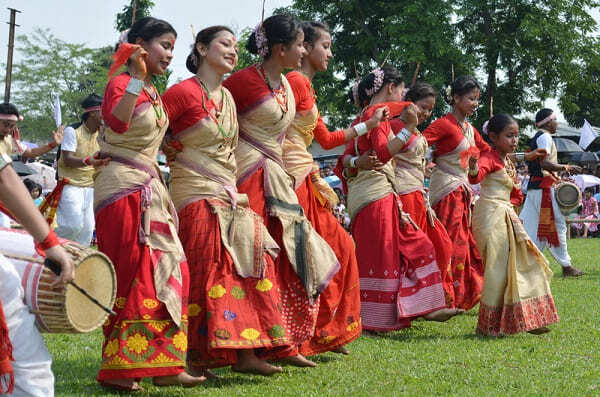
 Data Structure
Data Structure Networking
Networking RDBMS
RDBMS Operating System
Operating System Java
Java MS Excel
MS Excel iOS
iOS HTML
HTML CSS
CSS Android
Android Python
Python C Programming
C Programming C++
C++ C#
C# MongoDB
MongoDB MySQL
MySQL Javascript
Javascript PHP
PHP
- Selected Reading
- UPSC IAS Exams Notes
- Developer's Best Practices
- Questions and Answers
- Effective Resume Writing
- HR Interview Questions
- Computer Glossary
- Who is Who
What is the full form of AGP ?
Introduction
AGP or the Asom Gana Parishad party was mainly formed to implement the objectives of the Assam Movement. Since, it was born from this movement, multiple stakeholders of the movement including several political parties and members and leaders helped in its formation. This is also the very reason why this party experiences factionalism from its very birth. The party's ideologies mostly aim to respect and safeguard the original people of Assam and their interests. In this article we will briefly discuss the history, organisation and ideology of the AGP.
History
Asom Gana Parishad was formed as an umbrella organisation to carry out a movement started together by All Assam Students' Union and other organisations of social, political and cultural backgrounds to deport outsiders from Assam. This movement was born due to the fear of Assamese people of becoming a minority in their own state due to increased migration of people from Bangladesh and Nepal. The movement is known as the Assam Movement and this continued for six long years with the only aim of reducing foreigners in the land of Assam. It was during this movement that some of the leaders thought of creating the AGP so that they could contest the 1985 December election. So, with the aim of achieving the objectives of the Assam Movement the APG was born on 12th October 1985 after a political convention for three-days in Golaghat, Assam.
Since many political parties were part of the Assam movement, it should be noted that various leaders of various political parties came forward to build the AGP. Two such political parties namely ?Asom Jatiyabadi Dal (AJD)' and ?Purbanchaliya Lok Parishad (PLP)' became part of AGP. After the formation of the party a state committee of 38 members was formed and Prafulla Kumar Mahanta was made the President-in-chief of this body. This formation of the party became a success as it won the elections of December 1985 with 64 seats making Prafulla Kumar Mahanta, the Chief Minister of Assam. The formation of AGP also meant the end of dominance of the Congress party in the state.
Ideology
The preamble of the AGP declares the main objectives of the party which are mostly aligned with the Assam Movement. On the basis of their ultimate ambition to protect the integrity and identity of Assam, their ideology or objectives are as follows
The party aims to protect the sovereignty and unity of India and remain loyal to the Indian Constitution.
They wish to build a strong and powerful Assam where political equality, economic improvements and social justice would be ensured with due respect to federalism and the democratic features of India.
Develop economic self-sufficiency in Assam by developing and improving manpower, proper use of forest and water resources, generate employment opportunities and expand the industrial sector.
Developing tolerance among Assamese people towards other communities by encouraging them to trust people and prevent any kind of religious, cultural, racial misunderstanding.
To safeguard the regional interest of Assamese people or indigenous people of Assam and create a ?classless society' which would be free from exploitation.

Tradition of Assamese people: Bihu dance
Organisation
The organisational structure of the AGP is categorised into four tiers. These include the Central Committee, District Committee, Regional Committee and Branch Committee. The Central Committee consists of the President, Working President, General Secretary, Executive Secretary, Vice-President, General Secretary, Secretary, Finance Secretary, Information and publicity and the Office Secretary. This body is a state level body located in Assam and is one of the main bodies for policy making in the party. The committee is also known as the General Council or General House.
The District Committee is constituted at various levels and there are a total of 52 committees. These levels include the Municipal level, Sub-divisional level and Civil administrational level.
The Regional Committee is also known as the Anchalik Committees which are constituted at the Village Panchayat, town, municipal and ward level.
The Branch Committee is also called the Shakha located at the Gaon Panchayat and also at the town, ward, municipal level.
The AGP also organised additional committees known as the Booth Committee, Block Committee, Constituency Committee and Zonal Committee.
Conclusion
The AGP is one of the largest political parties in Assam. Due to its growth from the Assam Movement the party has faced enormous factionalism. Despite this, the party has adopted and built itself for the people of Assam and is recognised as a major regional party in India.
FAQs
Q1. What do you understand about the term ?factionalism'?
Ans. Factionalism is a concept which means the split or separation of a group of people from an organisation due to differences among them. This split can occur into two more than two groups. Factionalism can be categorised as ?unifactionalism', ?bifactionalism' and ?multi factionalism'.
Q2 Mention one ideology of the AGP.
Ans. One of the ideology of the AGP is to prevent discrimination while organising people for political motives. They wish to accommodate all people in politics irrespective of their caste, religion, creed or language, etc.
Q3 Write two positive impacts of factionalism.
Ans. Firstly, factionalism helps in bringing new members to a political party. Secondly, factions that occur due to ideological differences help in keeping the ideas and interests of the factional groups alive which in turn prevents the domination of some political ideas.

